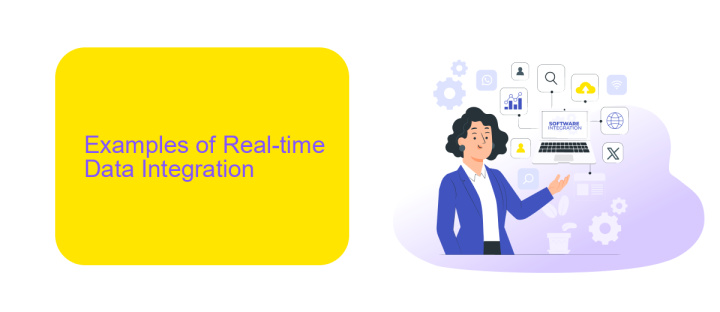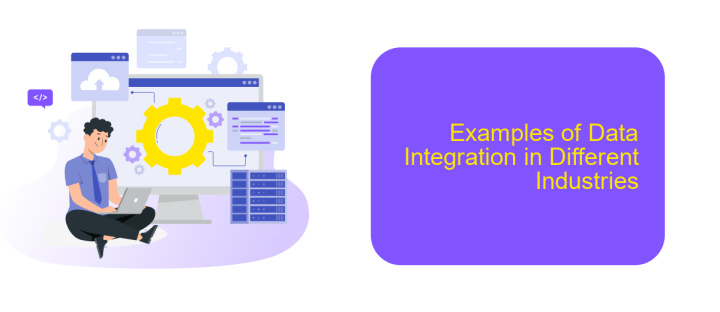Examples of Data Integration
Data integration is a crucial process in today's data-driven world, enabling seamless aggregation of information from diverse sources. This article explores various examples of data integration, highlighting its importance in enhancing decision-making, improving efficiency, and driving innovation across different industries. By understanding these examples, organizations can better leverage their data assets to achieve strategic goals and maintain a competitive edge.
Examples of Batch Data Integration
Batch data integration is a method where data is collected over a period and then processed in bulk. This approach is particularly useful for organizations that need to process large volumes of data at specific intervals rather than in real-time. Batch processing can help streamline operations and ensure data consistency across various systems.
- Data Warehousing: Collecting and integrating data from multiple sources into a central repository for analysis.
- ETL Processes: Extract, Transform, Load (ETL) operations that move data from source systems to a data warehouse or data lake.
- Backup and Recovery: Regularly scheduled backups of databases and systems to ensure data integrity and availability.
- Reporting: Generating periodic reports based on integrated data from different systems.
Services like ApiX-Drive can simplify batch data integration by automating the data collection and processing tasks. By using such tools, organizations can efficiently manage their data workflows, reduce manual intervention, and ensure timely data updates. ApiX-Drive offers a user-friendly interface and customizable workflows, making it easier to set up and maintain batch data integration processes.
Examples of Real-time Data Integration

Real-time data integration is crucial for businesses that require up-to-the-minute information to make informed decisions. One common example is in the financial sector, where stock trading platforms need to integrate real-time market data to provide users with the latest stock prices and trends. This ensures that traders can react instantly to market changes, optimizing their investment strategies and minimizing risks.
Another example is in the e-commerce industry, where real-time data integration enables seamless inventory management and customer service. Platforms like ApiX-Drive facilitate this by allowing businesses to connect various applications and services, ensuring that inventory levels are updated in real-time across all sales channels. This helps prevent overselling and enhances customer satisfaction by providing accurate product availability information. ApiX-Drive's user-friendly interface and robust features make it an ideal choice for businesses looking to streamline their data integration processes efficiently.
Examples of Hybrid Data Integration

Hybrid data integration combines on-premises and cloud-based systems, enabling businesses to leverage the best of both worlds. This approach allows organizations to maintain control over sensitive data while taking advantage of the scalability and flexibility offered by cloud solutions.
- Data Synchronization: Tools like ApiX-Drive can help synchronize data between on-premises databases and cloud applications, ensuring consistency and real-time updates.
- API Management: Integrating APIs from different environments can streamline workflows. ApiX-Drive offers a platform to manage and automate these integrations seamlessly.
- Data Transformation: Hybrid integration often requires data to be transformed between different formats. ApiX-Drive provides robust capabilities to map and convert data as it moves between systems.
By implementing hybrid data integration, businesses can achieve a more cohesive and efficient data ecosystem. Services like ApiX-Drive simplify the process, making it easier to connect disparate systems and automate data flows, ultimately leading to better decision-making and operational efficiency.
Examples of Data Integration in Different Industries

Data integration is a crucial aspect of modern business operations, enabling seamless information flow across various systems and applications. Different industries leverage data integration to enhance efficiency, improve decision-making, and drive innovation.
In the healthcare sector, data integration facilitates the consolidation of patient records from multiple sources, ensuring comprehensive and accurate patient histories. This integration supports better diagnosis and treatment plans. In the retail industry, integrating data from online and offline sales channels helps businesses gain a unified view of customer behavior, optimizing inventory management and personalized marketing strategies.
- Healthcare: Consolidating patient records for improved diagnosis and treatment.
- Retail: Unifying online and offline sales data for better inventory and marketing decisions.
- Finance: Integrating transaction data to detect fraud and ensure regulatory compliance.
- Manufacturing: Combining data from different production stages to enhance quality control and efficiency.
Services like ApiX-Drive play a pivotal role in streamlining data integration processes. By offering automated workflows and real-time data synchronization, ApiX-Drive helps businesses across various industries connect disparate systems effortlessly, ensuring data consistency and reliability.


Examples of Data Integration Success Stories
One notable success story in data integration comes from a leading e-commerce company that leveraged ApiX-Drive to synchronize its various sales channels. By integrating data from their website, mobile app, and physical stores, they achieved a unified view of customer behavior. This comprehensive insight allowed them to personalize marketing campaigns, streamline inventory management, and ultimately increase sales by 20% within the first quarter of implementation.
Another example involves a healthcare provider that used ApiX-Drive to integrate patient data from multiple sources, including electronic health records (EHR), lab results, and appointment scheduling systems. This seamless integration enabled healthcare professionals to access complete patient histories in real-time, improving diagnosis accuracy and patient care. As a result, the provider saw a 30% reduction in administrative errors and a significant improvement in patient satisfaction scores.
FAQ
What is data integration?
Why is data integration important?
What are some common examples of data integration?
How can businesses automate data integration processes?
What are the challenges associated with data integration?
Apix-Drive is a universal tool that will quickly streamline any workflow, freeing you from routine and possible financial losses. Try ApiX-Drive in action and see how useful it is for you personally. In the meantime, when you are setting up connections between systems, think about where you are investing your free time, because now you will have much more of it.

